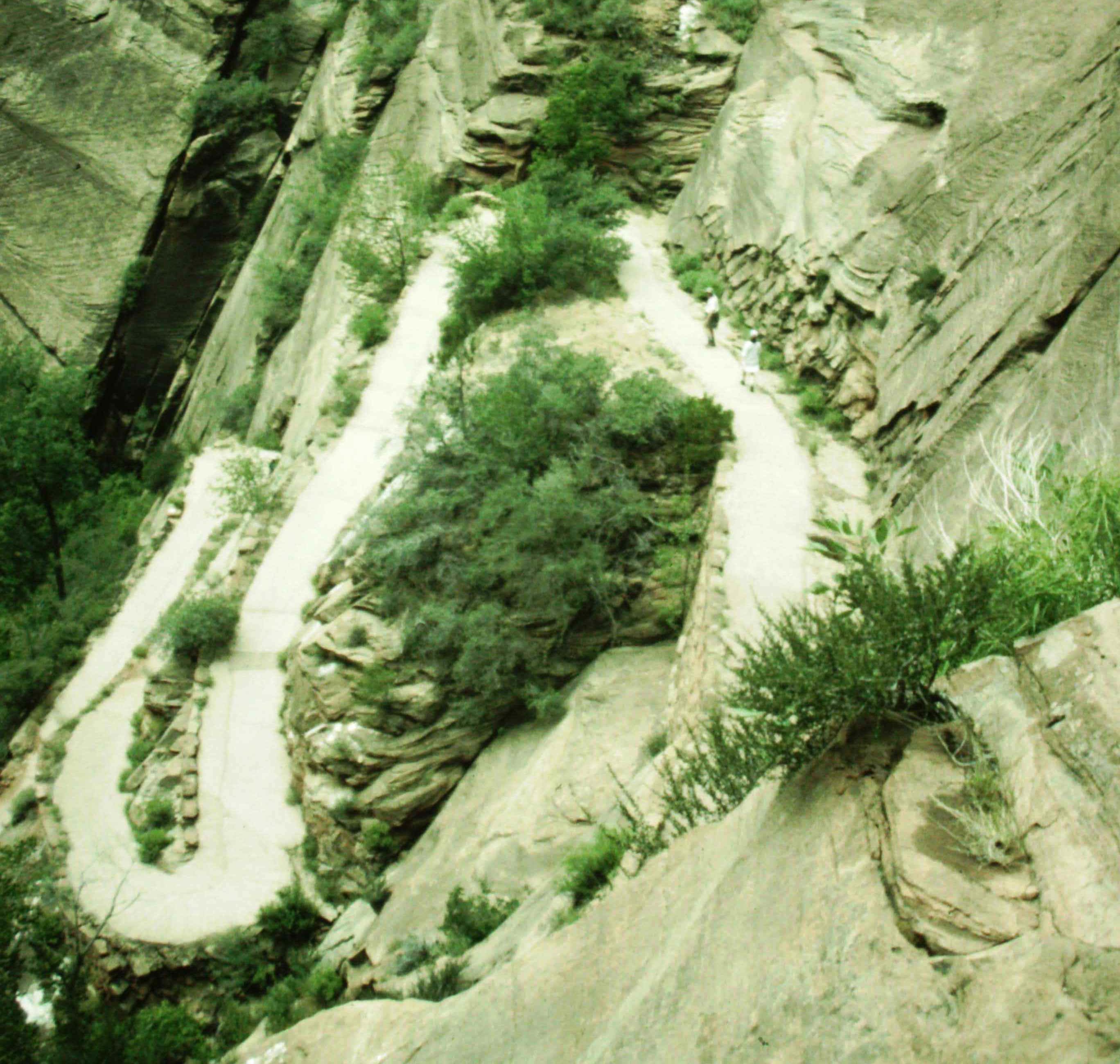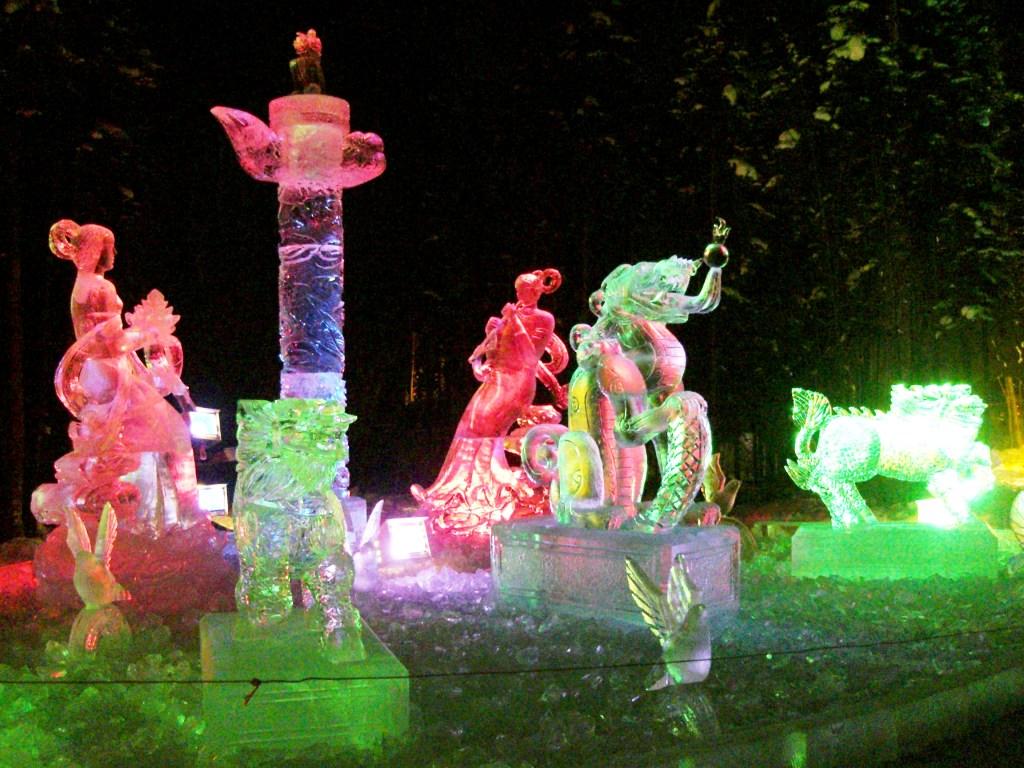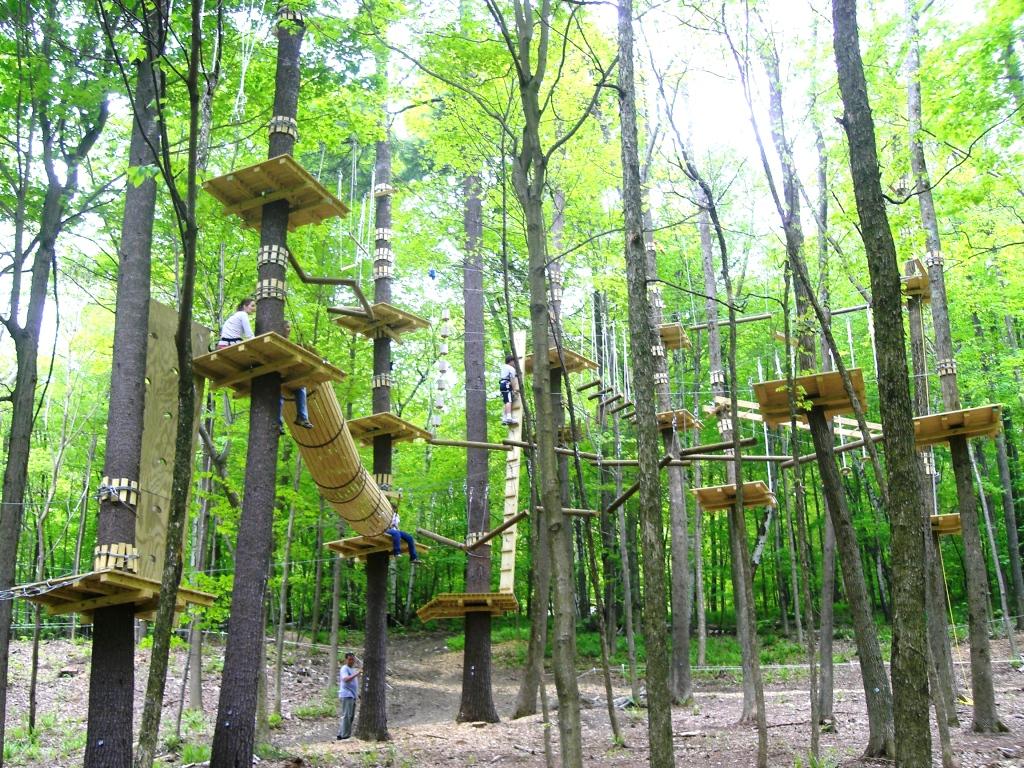The trail doesn’t seem especially steep going down, but the faces of people hauling themselves back up tell a different story. Truth is: While the grade might not seem rigorous when you’re descending, it is constant. What was merely constant going down becomes relentless on the way back up.
I’ve just passed a sign on the South Kaibab Trail telling day-hikers to turn around if they are running low on water. Most pass the sign without a second glance. They shouldn’t. Dehydration kills hikers in the Grand Canyon. Search and rescue is a fact of life here, and most of the incidents involve heat, water (or, more specifically, lack of water), and hubris.
“Think of it as climbing a mountain in reverse,” a ranger said during a safety lecture. “For every step down, you’re going to have to take one back up — and it will be twice as hard.”
In Your Bucket Because…
- Nothing else on earth even comes close.
- The Grand Canyon looks different when you experience it step-by-step, up close and personal.
- Good for anyone fit enough to walk and smart enough to apply common sense.
Hiking into the Belly of the Earth
It’s one thing to gawk from the top — the bird’s eye view. It’s quite another to descend into the belly of the earth, to walk among rocks that are hundreds of millions (and, at the bottom, two billion) years old. The rocks have their own language, their secrets told in colors and layers that were revealed by erosion and wind.
The Grand Canyon is a rift in the earth into which you could put the entire island of Manhattan, and it would be eaten by the silence and the space. Towers and pinnacles with fanciful names — devil’s this, giant’s that — stick up and surround you. You can imagine this as the abode of gods and heroes, a place of myths and mystery. The bottom of the Canyon calls to me, like a siren, “Come down, come down.”
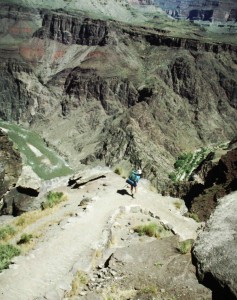
For dayhikers, safety lies in resisting the call. I want to go farther, to see what lies around one more turn, to discover what lies below the surface of the earth. But this is a dayhike, not an overnight backpack, and it’s seven miles down and another seven back up — plus you’ve got to gain back all of the 5,000 feet you lose. (Note: having done hikes like this on other trips — and having, in fact, also backpacked rim-to-rim in the Grand Canyon — I’d put the effort as being approximately equivalent to that of running a marathon — except that here, you’re doing it in 100 degree heat.)
Day Hiking the Corridor Trails
As I did on this trip, the vast majority of Grand Canyon dayhikers hike for a few hours in and back out of the Canyon via one of the so-called “corridor trails.” These trails — the South Kaibab and the Bright Angel on the South Rim; the North Kaibab on the North — act as the major north-south corridors across the canyon. Rangers recommend the corridor trails to first time Grand Canyon visitors because these paths are wide with relatively gentle switchbacks. (In fact, the corridor trails are used by mule trips into the Grand Canyon.) They are well-maintained and are regularly patrolled by rangers. The Bright Angel Trail is especially popular because it is a little less steep and actually has water on it at mile-and-a-half intervals during the main hiking season (spring to fall). (Note: water is not guaranteed).
There are other trails you can try — less well-marked trails, where you might lose the path among scrambly rocks that slither underfoot, trails where you might for a moment enjoy the illusion that you are the first person to lay eyes on this precise rock, that particular cactus. Trails where you feel the expansive hush of wilderness, the solitude of a wind that carries no voices.
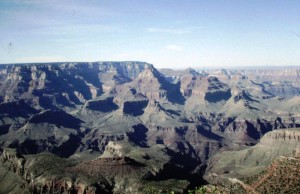
But before your try these steeper, less maintained, less-peopled trails, unpatrolled you should first be a serious and experienced desert hiker. On this trip, I’m with some non-outdoorsy friends who have graciously acceded to my demand that we actually walk into the Canyon. A few days earlier, I’d been hiking with someone else, a man who ended up in the hospital due to dehydration (shirtless hiking in direct sun, not enough water, too much mileage). So today, I’m a little gun shy on the subject: I’m the experienced hiker here. And it’s hot hot hot. I check the levels in our water bottles. Plenty left — but time to turn around.
Mountaineers have a saying that you have climbed a mountain successfully when everyone in your party is safe at the bottom. The same is true here — just upside down.
Practicalities
The following tips should help keep first-time Grand Canyon day-hikers safe:
- DO NOT attempt to go all the way to the bottom of the Grand Canyon and back up in one day. People have (literally) died trying to do this.
- When starting the hike down, notice that the National Park Service has placed signs telling you to turn back if you are out of water. Heed them!
- It is much easier to walk downhill than back up, and what seemed like a quick and easy hike when descending can become an arduous grind coming back up. Figure twice as much time (and at least twice as much water) to hike up as it took going down.
- Wear reasonable footwear: Athletic shoes will protect your feet, flip flops wont. Besides, do you really want to walk through mule poop wearing flip flops?
- Bring some Bandaids or moleskin for blisters, which are common in hot weather hiking.
- Wear clothing that provides protection against the sun, as well as plenty of sunscreen and sunglasses.
- Bring lots of water — at least one quart for every hour of planned hiking time. (Some people may need more.)
- Bring some easy-to eat snacks like GORP (a mixture of nuts, raisins, seeds, and sweets).
- Mule trains have the right of way. Move off the trail as directed by the pack-train leader.
- Tell someone where you plan to go – and when you plan to be back.
- No, your cell phone probably won’t work.
For more safety information, check out the National Park Service’s Grand Canyon Hiking Information Page.

